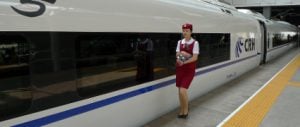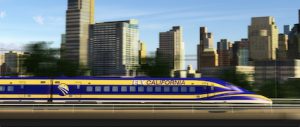On December 30 last year, in a new subway station on Beijing’s Line 15 – Wangjing West – the two most senior members of the municipal government, mayor Guo Jinlong and party secretary Liu Qi, presided over the opening ceremony for the five latest underground rail lines connecting central Beijing with surrounding counties.
Five years ago, Beijing had two subway lines; today it has 12, and in another five years, the figure will have climbed to 19, far outstripping the network in Paris (14 lines), London (11) and Tokyo (9) and approaching the level of New York City (24). Fast trains linking the Beijing subway system to the neighbouring cities of Baoding and Tangshan in Hebei Province are also planned by 2020. When these rapid inter-regional lines join the network, they will take the total to 30, exceeding the number in any other metropolis worldwide.
“This demonstrates our strategic investment priority in public transport. In the future, Beijingers will have to rely on the subway as their main means of transportation in central Beijing,” said Li Xiaosong, spokesperson for the Beijing government’s Transportation Commission.
Not far from the new subway station, car dealerships operate. But in late December, automobile salesmen here and elsewhere in the capital, were unlikely to be cheerful. A few days before the Wangjing West ceremony, Beijing’s deputy general secretary announced a municipal policy: new car registrations for the coming year would be limited to 240,000, roughly one third of the number of new cars to hit the road in 2010.
Taking these two events together, the final week of 2010 may be remembered as a watershed moment in Beijing’s urban development. Political scientist Edward Steinfeld pointed out in the 2007 World Bank report “China Urbanizes” that automobiles have become the primary mode of transportation as a result of “choice rather than necessity”.
From first announcing its intention to focus on the development of public transport within Beijing in 2004, the city has successfully shifted rail to the top of its priority list. The example set by the capital is to be followed by other Chinese cities, which will further influence the global market. As the Economist reported in January: “Annual sales growth [in the Chinese car market] is forecast to fall from 30% to around 10% from this year as other parts of the country follow Beijing’s move to restrict the number of cars in the city.”
Birth of restriction
The first car restriction policy was born in the lead-up to the Beijing Olympics. In July 2008, Beijing announced that each car would only be allowed to drive within the fourth ring road on alternate days, depending on whether the last digit of its registration number was odd or even. The policy was well received, perhaps because of the proud and joyful mood in the lead-up to the Olympics. However, the municipal government never planned to withdraw it.
After the Olympics, this restriction system was retained in a modified form: automobiles were banned from driving on one day of the week, based on their license plate number. The government also kept the right to implement the “odd-even car restriction” in case of bad weather or important events.
This restriction policy did not constrain people’s enthusiasm for cars, however. In fact, it provided an incentive for those with sufficient means to purchase a second car, in order to be able to drive every day. In 2007, the number of newly registered cars in Beijing was 252,000. This number rose to 376,000 in 2008, surged to 550,000 in 2009 and reached 700,000 in 2010, despite the global financial crisis.
By December 2010, the number of registered cars in Beijing stood at 4.7 million – a third higher than two years previously. And each day, half a million additional cars from other provinces were passing through the city.
Higher car ownership has not eased the pressure on the rail system, however, as the growing population of Beijing and its increasing mobility have far exceeded government predictions. For example, when subway Line 5 was opened in 2007, experts predicted it would have 800,000 daily passengers by 2030. In fact, it hit 800,000 in 2010. Travelling on subways, especially at peak times, can be unbearable: from time to time, the local news runs reports of people fainting, vomiting or even being pushed onto the track by the crowd.
Beijing set its population target at 16 million by 2010 and 18 million by 2020 in China’s 11th Five Year Plan. By the end of 2010, the city’s population had hit 19.7 million.
Rising awareness
Congestion has long been an issue for Beijing residents, but what really intensified public focus on the issue in the last quarter of 2010 was a record-breaking traffic jam in Beijing. On September 17, the Friday night before the Mid-Autumn Festival, one of China’s most important public holidays, the traffic flow between Beijing’s second ring road three kilometres from the city centre and the fourth ring road, 10 kilometres away, was paralysed for five to six hours. It was later reported that light rain was to blame.
Public and media attention devoted to the issue snowballed. Southern Weekend cited an IBM study showing that residents in Beijing and Mexico City experience the most “commuter pain” – a measure that took in, among other things, time spent in traffic and stress induced by driving – and that working efficiency and happiness of half of Beijing’s residents has been negatively affected by it. The Chinese Academy of Social Sciences further calculated that congestion costs the economy 42 million yuan (US$6.5 million) every day or 14.9 billion yuan (US$2.3 billion) every year.
On November 17, at a transportation conference in Suzhou, urban transportation expert and former vice minister of construction Zhou Ganshi delivered his opening speech – “Beijing’s congestion” – after being caught for two hours on a four-kilometre stretch of road in central Beijing, and missing his scheduled flight to the meeting.
“Traffic congestion is the failure of governance,” concluded Southern Weekend in a December 16 article, noting that “Beijing’s leaders are now being pushed towards the edge of a cliff to come up with a solution.”
Later that month, the Beijing municipal government announced the policy of restricting new automobile registrations in 2011 to 240,000, or 20,000 per month. On January 12011, an official from the Beijing municipal government’s Transportation Research Center told journalists that “odd-even car restrictions” were also likely to be implemented when petrol prices rise too high.
On issues of urbanisation, Chinese society has taken an active role in influencing government. The dynamism of Chinese civil society is intimately connected with urbanisation itself. It’s hard to imagine the vitality shown by Beijingers in this case, without the context of the city’s fast economic and demographic growth, and the rise in its international status.
Even so, Beijing’s shift in priorities from road to rail may have come a bit late: the city’s congestion is already the world’s worst. Policies that severely restrict new cars coming onto the capital’s roads may be necessary parts of Beijing’s long-term development strategy, but are they panacea, or last-ditch attempts to save a dying patient’s life?
Liu Xuan, a former Beijing-based journalist, is a research student in urbanisation and transportation policy at Institut d’Études Politiques (Sciences Po) in Paris.
Homepage image from Greenpeace


